In October 2022, Kate and I decided to spend a long Columbus Day weekend in Peterborough, New Hampshire. There, for more than 25 years, Monadnock Art has organized free tours of artist studios throughout the area. And we decided to spend that lovely fall weekend viewing (and maybe buying) some art.
It went well. We bought a pencil drawing and abstract painting. And I tested my Retina IIa with T-Max 100 film shot through a fairly unusual Wratten 23A filter… and later developed in Caffenol. NOTE: You can see my entire Go Kit here!
“Our Town”?
If you don’t live in New England, you may not know that Peterborough was the purported model for “Grover’s Corners” in Thornton Wilder’s 1938 play “Our Town.”
It’s partially true. According to the “Our Town” Wiki page, Wilder began scribbling notes about the play in 1930s Chicago. He continued working his script during a 1937 stay at Peterborough’s prestigious MacDowell Colony (the oldest arts colony in the country). And Wilder more or less finished the script in Germany. But to see Peterborough’s influence on the finished product, just stroll through the town cemetery, where you can spot some familiar Grover’s-Corners names.
Wratten 23A?
Kodak’s 91-page booklet “Kodak Filters for Scientific and Technical Uses” lists the Wratten 23A as one of the “50 carefully selected filters that should meet most of the requirements for experiments or demonstrations in the laboratory.” It adds that the 23A is “a light red contrast filter with greater green absorption than No. 21 or 22. Suitable for two-color projection and special effects in black-and-white motion-picture work.” On the other hand, Kodak’s booklet “Workshop Series: Using Filters” pretty much ignores the 23A altogether.
The filter’s transmission spectrum is nearly identical with the Wratten 21 and 22. But the 23A’s begins very slightly closer to 600 nanometers. And between 600 and 900 nanometers, it passes very slightly less light. When shooting black-and-white film in daylight, Kodak recommended increasing exposure times by a factor of 6 or apertures by nearly 3 stops. (Tiffen, though, suggests a 4X filter factor or 2-stop exposure increase.)
But to me, the 23A just looks rosy orange! I expected it to increase image contrast more than an orange filter and less than a red. Perhaps it would also lighten foliage a little and darken blue tones… for cloud enhancement similar to IR-bandpass filters. And since the 23A doesn’t seem to be used much in B/W photography, I simply wanted to see how the T-Max negs would look! They were the second film I developed in Caffenol (with Tri-X 400 being the first). As it turns out, the negs came out pretty darned well.
Some “Our Town” Scenes
On this visit, I didn’t photograph Peterborough’s charming commercial center. Instead, I looked for scenes that reflected its old New England “Our Town” character. Since quite a few studio visits were on our agenda, I shot these photos “on-the-run.” The Retina IIa is a great little camera for that!
Peterborough had already held its annual “OurTownTrot 5K RunWalk.” And they aren’t shy about their theatrical connection:
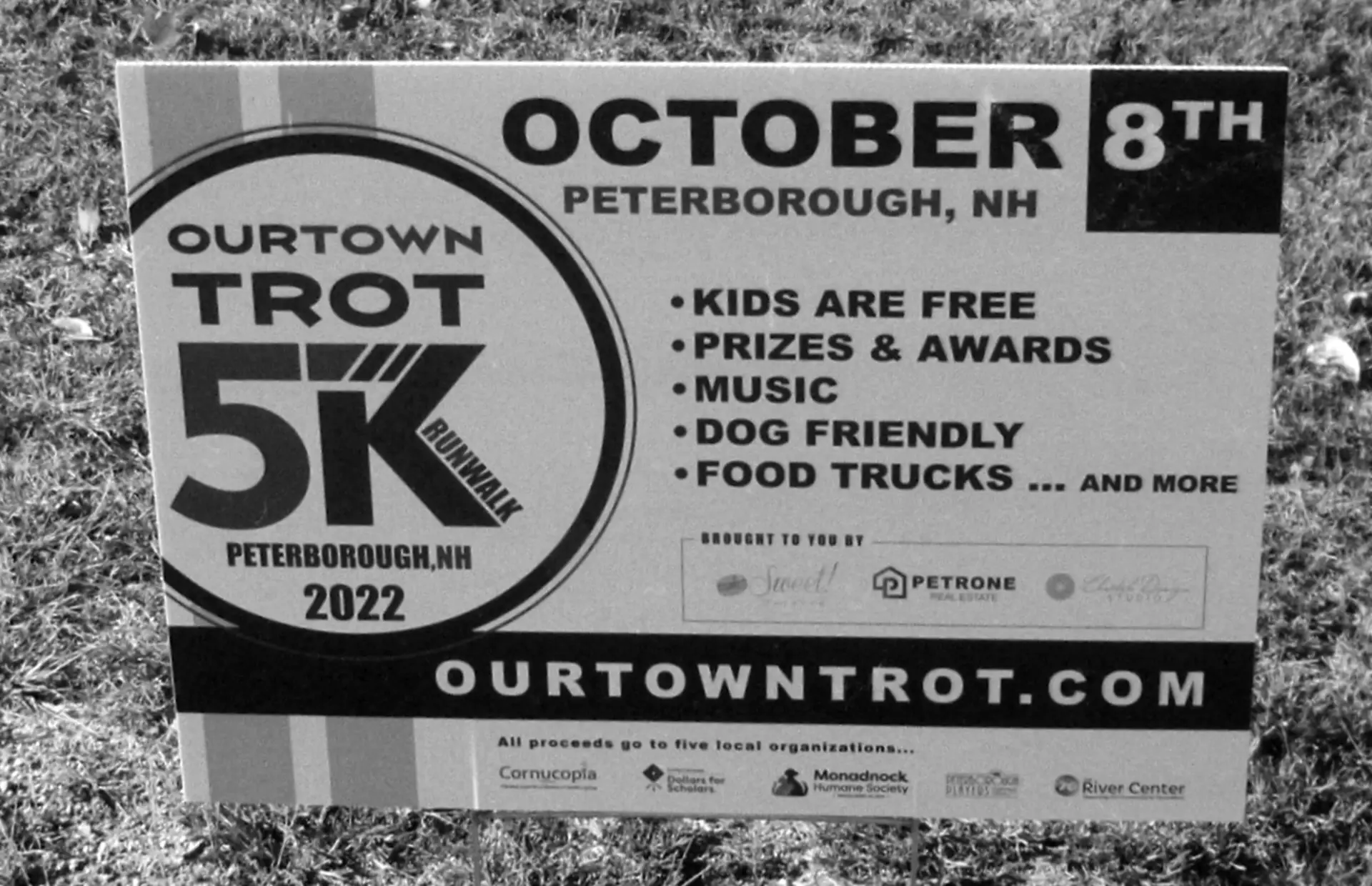
Peterborough’s smack dab on the Contoocook River (photo shot from the municipal parking lot):

You’ll find classic mill-town scenes here:
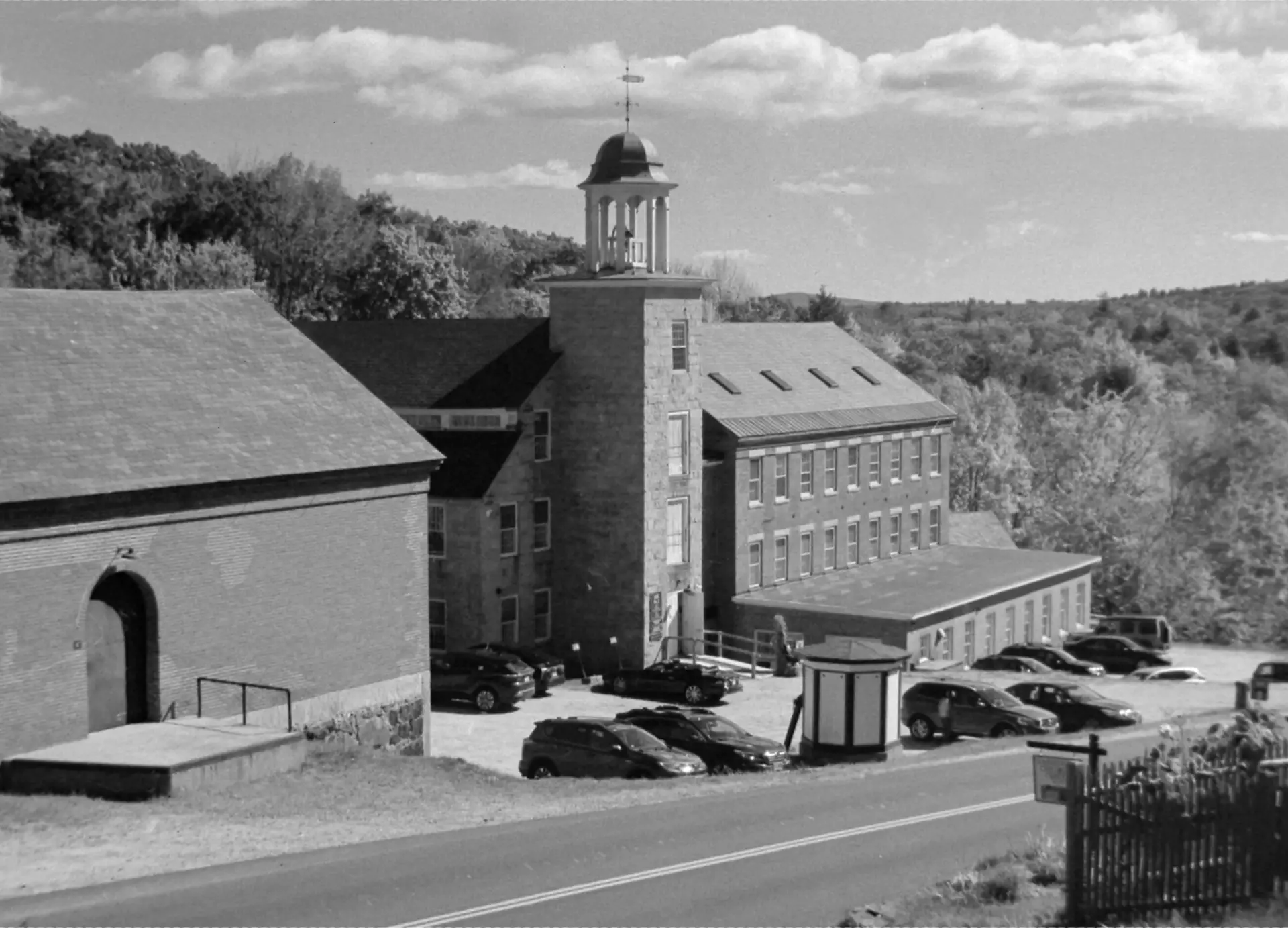
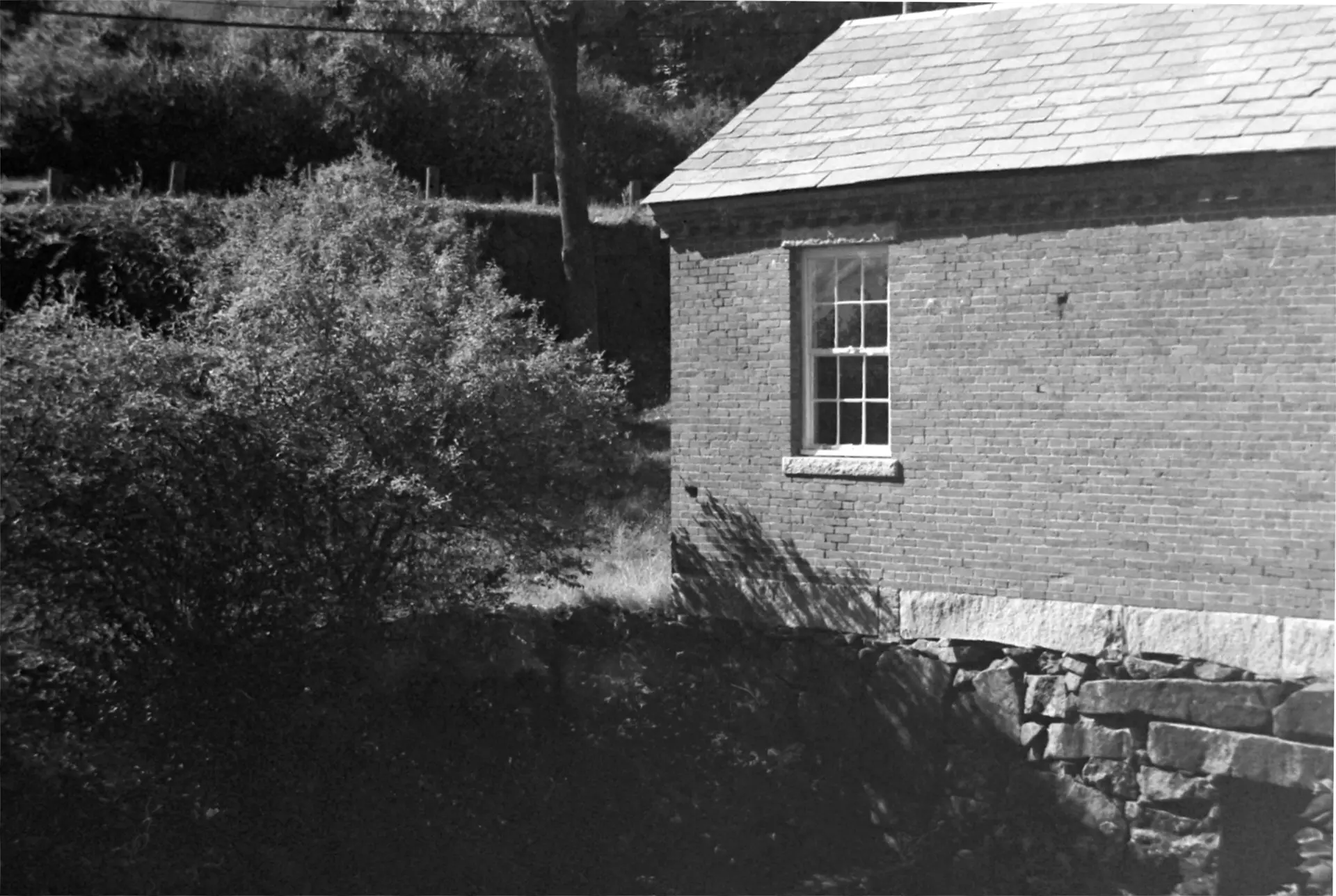
And as in the play, a fair share of arctypical New England churches:

If you decide to visit the annual Art Tour, begin at the Monadnock Center’s sampling of works from participating artists. (Sorry about the sun flare on the filter!):
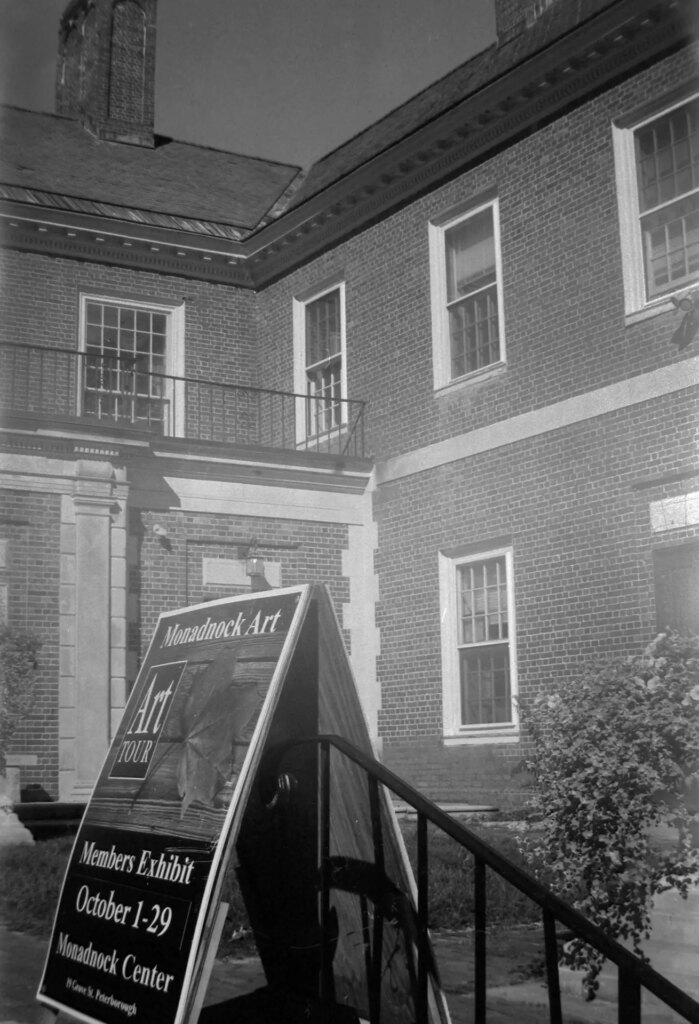
And if it’s open for visitors, one artist’s locally famous home and studio is a work unto itself. Dug into the earth, here’s its adobe-style front entrance:
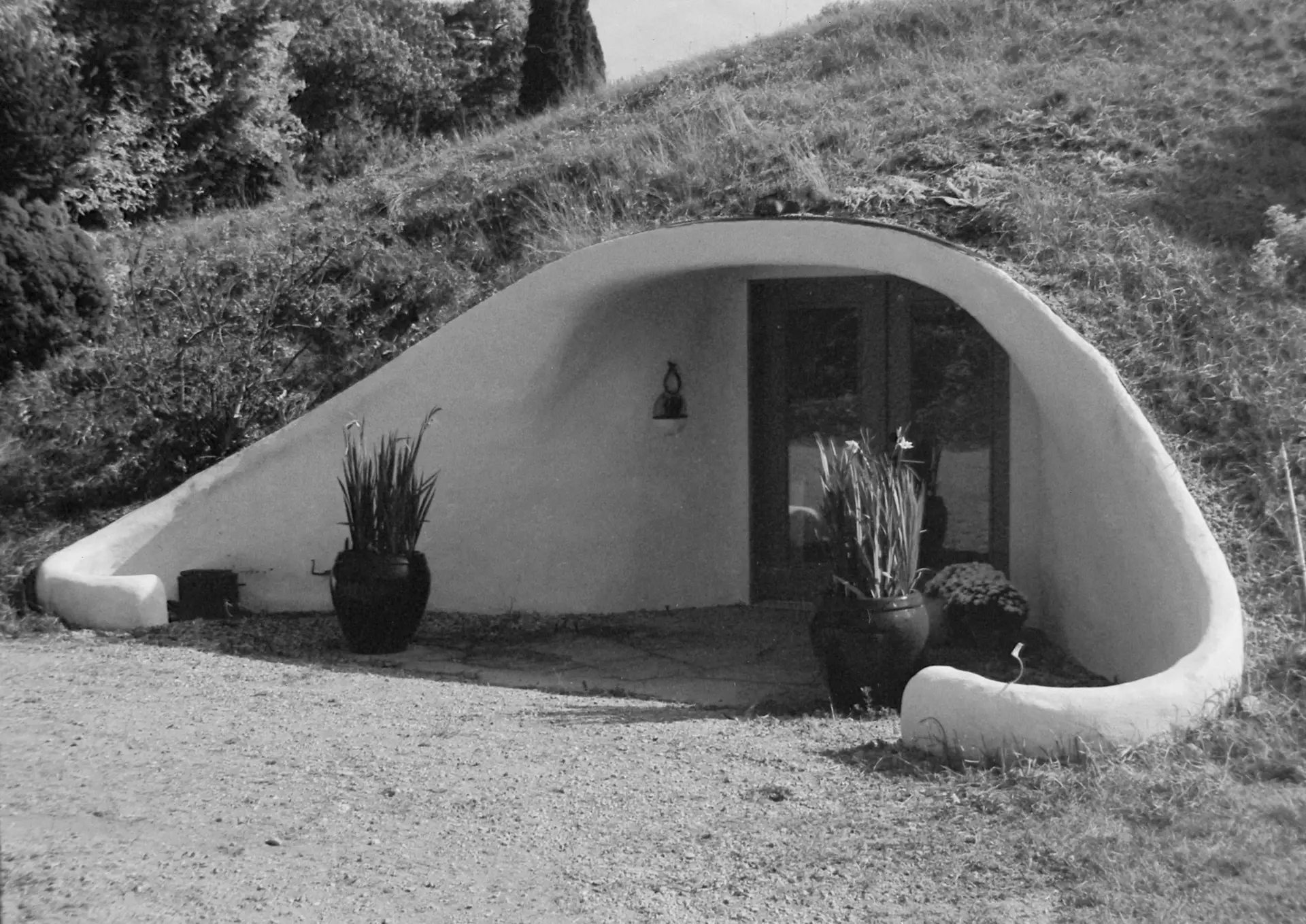
And here’s its rear patio (wonder who mows the roof)!:
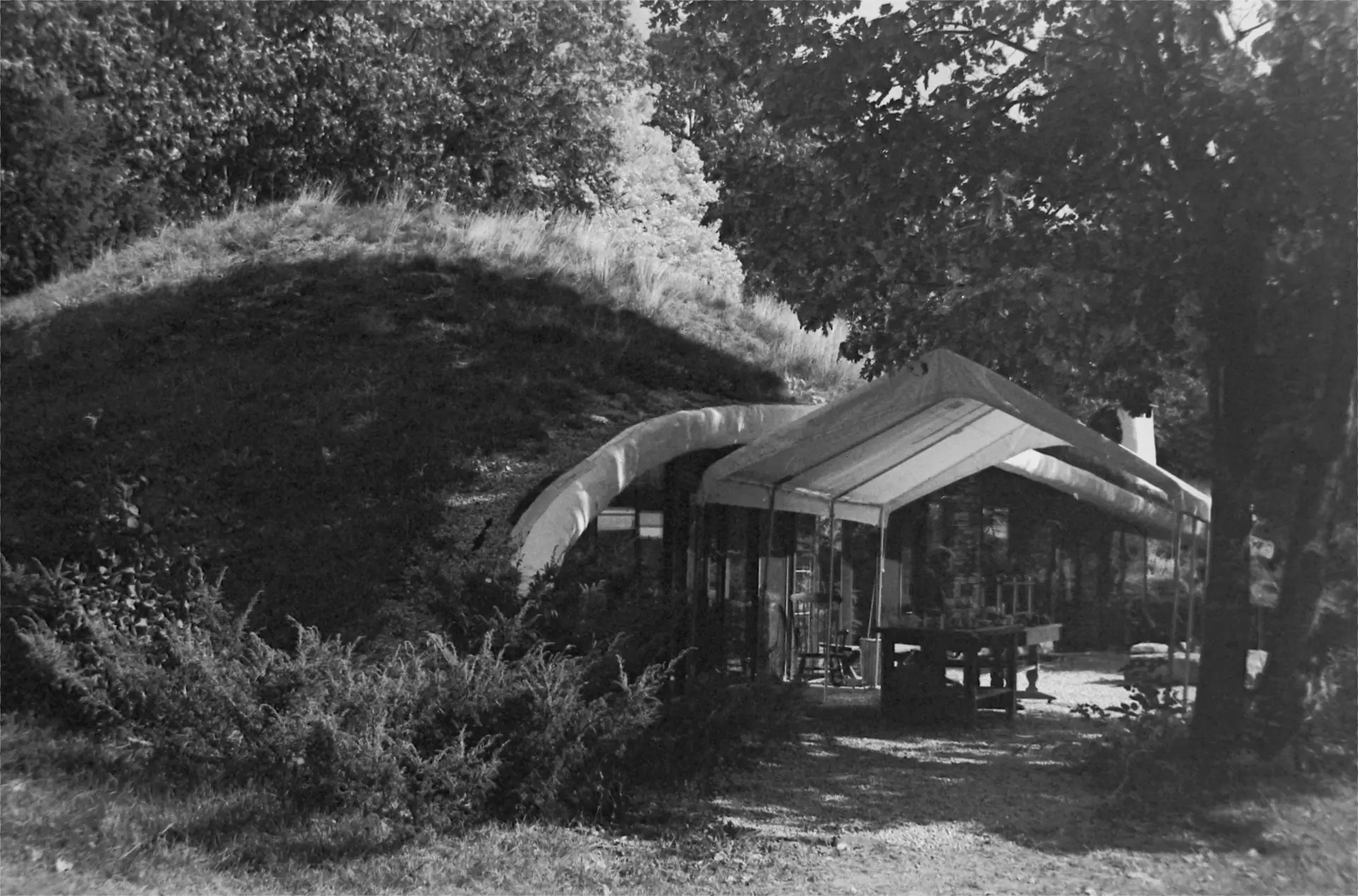
Despite outward appearances, the place is airy and roomy inside. (I tried shooting interiors with the Retina, but they came out way too dark.)
An Interesting Look
Overall, I liked the images. They’re pretty contrasty, but not as heavily so as one might expect from red filtration. The foliage in the river shot did seem to be lightened, when compared with its reflection in the water. And there was some IR-like cloud enhancement in a couple shots.
I also think the Caffenol development worked better with my fresher T-Max 100 than the decades-expired Tri-X 400 I tried before.
Next time, though, I should run a more scientific test– pitting the 23A against Wratten 21, 22 and 25 filters… and no filtration.
–Dave Powell is a Westford, Mass. writer and avid amateur photographer.
Share this post:
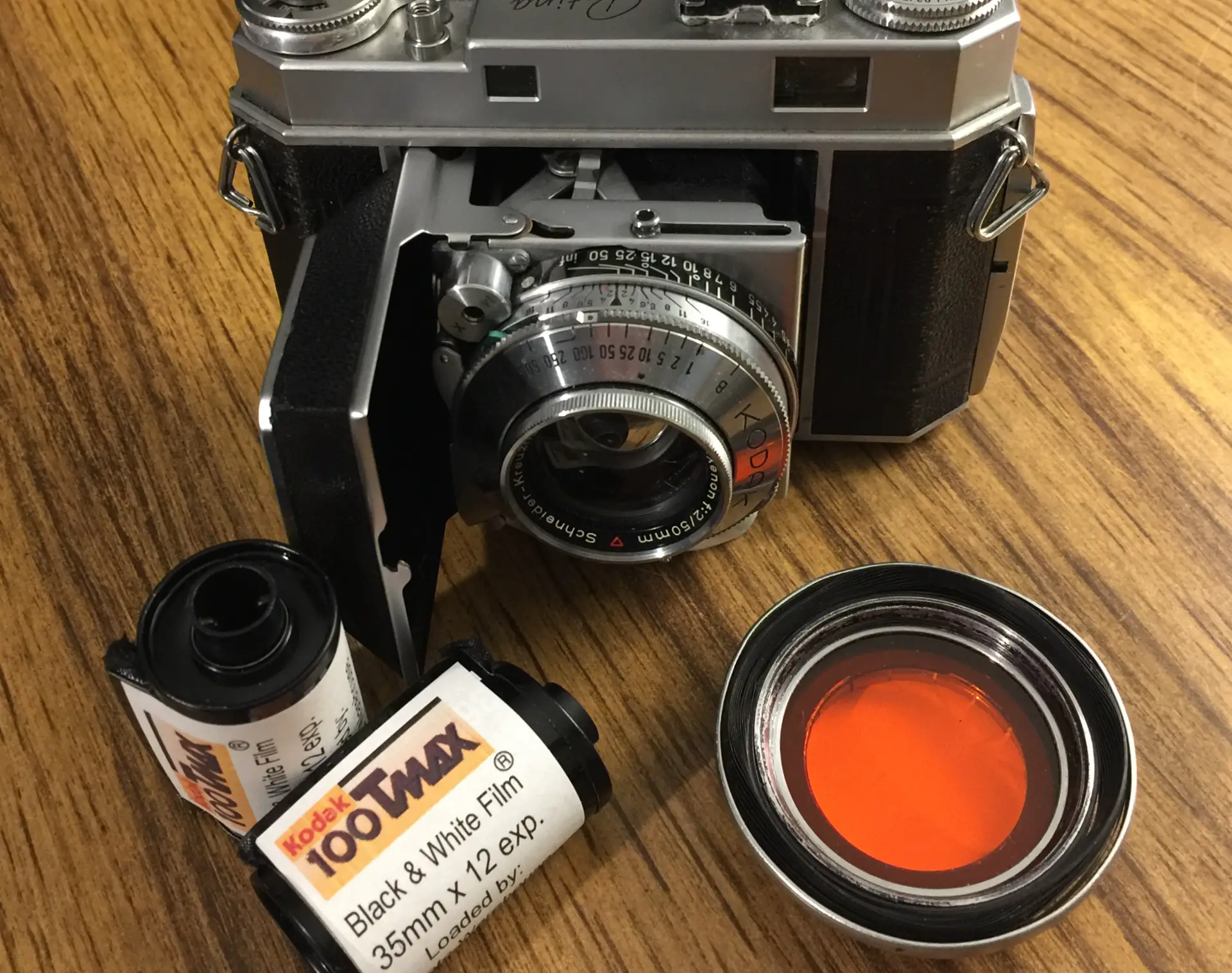








Comments
Julian Tanase on 3 Days in “Our Town” with a Retina IIa, T-Max 100, Wratten 23A and Caffenol
Comment posted: 07/06/2023
Thank you for sharing !
Comment posted: 07/06/2023
Fred Nelson on 3 Days in “Our Town” with a Retina IIa, T-Max 100, Wratten 23A and Caffenol
Comment posted: 07/06/2023
Comment posted: 07/06/2023
Roman Dubravský on 3 Days in “Our Town” with a Retina IIa, T-Max 100, Wratten 23A and Caffenol
Comment posted: 07/06/2023
Comment posted: 07/06/2023
Sam Forrest on 3 Days in “Our Town” with a Retina IIa, T-Max 100, Wratten 23A and Caffenol
Comment posted: 07/06/2023
Comment posted: 07/06/2023
Comment posted: 07/06/2023
Comment posted: 07/06/2023
MICHAEL on 3 Days in “Our Town” with a Retina IIa, T-Max 100, Wratten 23A and Caffenol
Comment posted: 07/06/2023
Comment posted: 07/06/2023